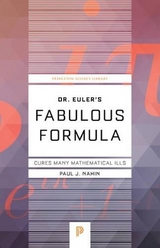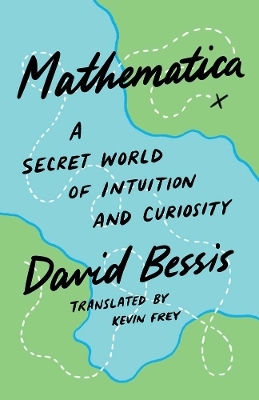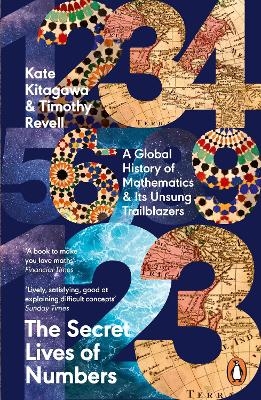
Dr. Euler's Fabulous Formula
Cures Many Mathematical Ills
Seiten
2006
Princeton University Press (Verlag)
978-0-691-11822-2 (ISBN)
Princeton University Press (Verlag)
978-0-691-11822-2 (ISBN)
- Titel erscheint in neuer Auflage
- Artikel merken
Zu diesem Artikel existiert eine Nachauflage
Presents the story of the formula - zero equals e[pi] i+1 long regarded as the gold standard for mathematical beauty. This book shows why it still lies at the heart of complex number theory. It discusses many sophisticated applications of complex numbers in pure and applied mathematics, and to electronic technology.
I used to think math was no fun 'Cause I couldn't see how it was done Now Euler's my hero For I now see why zero Equals e[pi] i+1 --Paul Nahin, electrical engineer In the mid-eighteenth century, Swiss-born mathematician Leonhard Euler developed a formula so innovative and complex that it continues to inspire research, discussion, and even the occasional limerick. Dr. Euler's Fabulous Formula shares the fascinating story of this groundbreaking formula--long regarded as the gold standard for mathematical beauty--and shows why it still lies at the heart of complex number theory. This book is the sequel to Paul Nahin's An Imaginary Tale: The Story of I [the square root of -1], which chronicled the events leading up to the discovery of one of mathematics' most elusive numbers, the square root of minus one. Unlike the earlier book, which devoted a significant amount of space to the historical development of complex numbers, Dr. Euler begins with discussions of many sophisticated applications of complex numbers in pure and applied mathematics, and to electronic technology.
The topics covered span a huge range, from a never-before-told tale of an encounter between the famous mathematician G. H. Hardy and the physicist Arthur Schuster, to a discussion of the theoretical basis for single-sideband AM radio, to the design of chase-and-escape problems. The book is accessible to any reader with the equivalent of the first two years of college mathematics (calculus and differential equations), and it promises to inspire new applications for years to come. Or as Nahin writes in the book's preface: To mathematicians ten thousand years hence, "Euler's formula will still be beautiful and stunning and untarnished by time."
I used to think math was no fun 'Cause I couldn't see how it was done Now Euler's my hero For I now see why zero Equals e[pi] i+1 --Paul Nahin, electrical engineer In the mid-eighteenth century, Swiss-born mathematician Leonhard Euler developed a formula so innovative and complex that it continues to inspire research, discussion, and even the occasional limerick. Dr. Euler's Fabulous Formula shares the fascinating story of this groundbreaking formula--long regarded as the gold standard for mathematical beauty--and shows why it still lies at the heart of complex number theory. This book is the sequel to Paul Nahin's An Imaginary Tale: The Story of I [the square root of -1], which chronicled the events leading up to the discovery of one of mathematics' most elusive numbers, the square root of minus one. Unlike the earlier book, which devoted a significant amount of space to the historical development of complex numbers, Dr. Euler begins with discussions of many sophisticated applications of complex numbers in pure and applied mathematics, and to electronic technology.
The topics covered span a huge range, from a never-before-told tale of an encounter between the famous mathematician G. H. Hardy and the physicist Arthur Schuster, to a discussion of the theoretical basis for single-sideband AM radio, to the design of chase-and-escape problems. The book is accessible to any reader with the equivalent of the first two years of college mathematics (calculus and differential equations), and it promises to inspire new applications for years to come. Or as Nahin writes in the book's preface: To mathematicians ten thousand years hence, "Euler's formula will still be beautiful and stunning and untarnished by time."
Paul J. Nahin is Professor Emeritus of Electrical Engineering at the University of New Hampshire. He is the author of Duelling Idiots and Other Probability Puzzlers, When Least Is Best: How Mathematicians Discovered Many Clever Ways to Make Things as Small (or as Large) as Possible, and An Imaginary Tale: The Story of!-1 (all Princeton). Nahin is Professor Emeritus of Electrical Engineering at the University of New Hampshire. He and his wife Pat live with three enormous tabby cats in a country cape in Lee, New Hampshire.
| Erscheint lt. Verlag | 30.4.2006 |
|---|---|
| Zusatzinfo | 2 halftones.77 line illus. |
| Verlagsort | New Jersey |
| Sprache | englisch |
| Maße | 152 x 235 mm |
| Gewicht | 482 g |
| Themenwelt | Sachbuch/Ratgeber ► Natur / Technik |
| Mathematik / Informatik ► Mathematik ► Geschichte der Mathematik | |
| ISBN-10 | 0-691-11822-1 / 0691118221 |
| ISBN-13 | 978-0-691-11822-2 / 9780691118222 |
| Zustand | Neuware |
| Haben Sie eine Frage zum Produkt? |
Mehr entdecken
aus dem Bereich
aus dem Bereich
Das Jahrhundert, in dem die Mathematik sich neu erfand. 1870-1970
Buch | Hardcover (2022)
Heyne (Verlag)
22,00 €
a secret world of intuition and curiosity
Buch | Hardcover (2024)
Yale University Press (Verlag)
32,70 €
a global history of Mathematics & its Unsung Trailblazers
Buch | Softcover (2024)
Penguin Books Ltd (Verlag)
16,20 €



